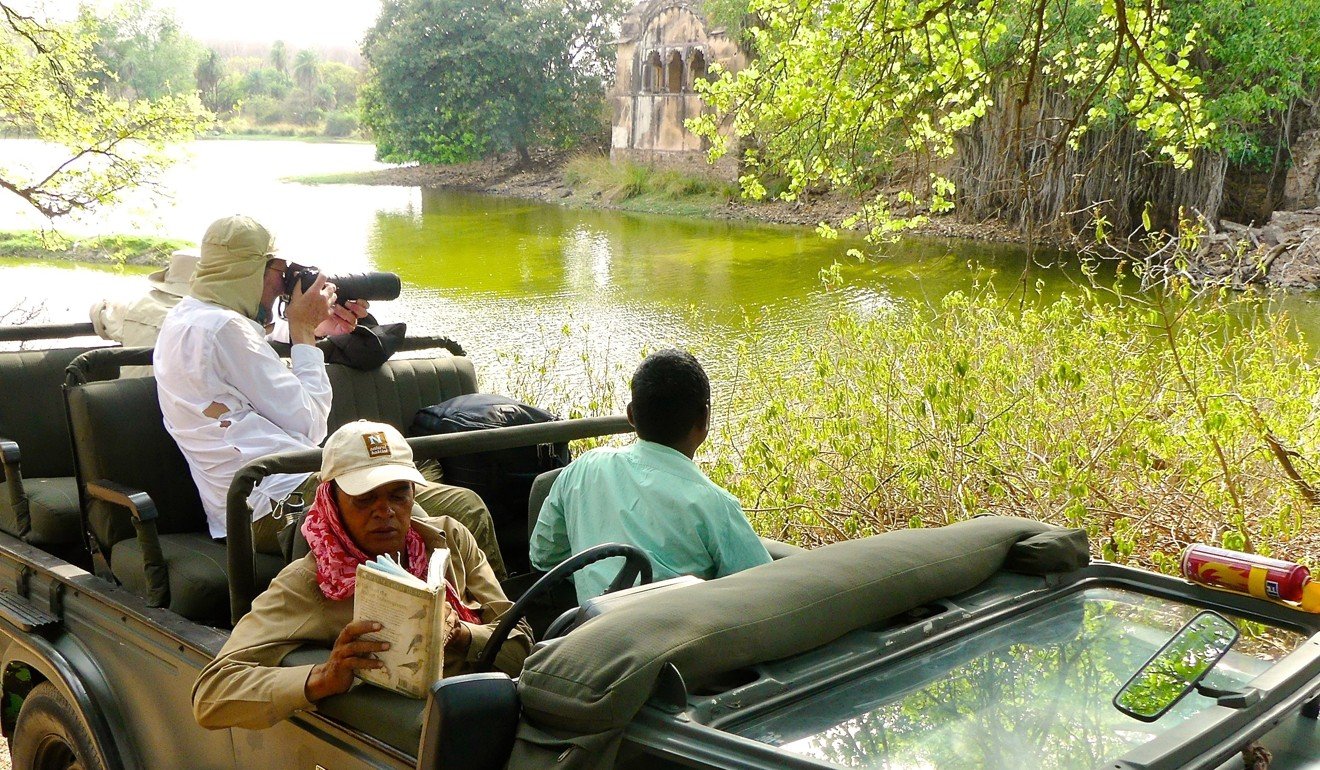
Tiger safaris in India – what you need to know about seeing the stealthy, scarce and spectacular big cats
The world’s biggest cats are hard to spot, but there are ways to increase your chances of success
Going on safari to India to photograph tigers in the wild is an unrivalled experience. These are the world’s largest cats. They are stealthy, solitary, spectacular and scarce.
But sighting one in its natural habitat is never a sure thing. “All wildlife viewing is opportunistic and needs a certain amount of luck,” says Toby Sinclair, an expedition leader with Natural Habitat Adventures in Delhi.
Here are some things to know when considering a tiger safari.
When to go
You can tilt the odds in your favour by arriving when the escalating heat of late spring drives tigers from the thick jungle scrub to more visible waterholes. Some national parks and wildlife sanctuaries are especially rewarding for visitors during the hot months of April to mid-June, Sinclair says.
“This is when the water is limited to a few pools and the animals, both prey and predator, have to come to drink water at least twice a day,” he says. “It is also the time when much of the grass and undergrowth has died back so the areas of view are generally better.”

There’s a trade-off, though. In India, wildlife photographers generally travel in open safari vehicles. That makes it easier to spot bird and animal life high in the tree canopy. But it also exposes you to the punishing sun, making dehydration a possibility with temperatures reaching 46 to 48 degrees Celsius.
Dehydration can shut you down, causing vomiting, diarrhoea, fainting and muscle cramps. You can reduce the risk by eating right and frequently hydrating.
How about other times of the year? “Because of its size and the varied landscapes, there are parts of India that are closed during the monsoon (late June to late September) and a few (parks) that don’t open until November,” Sinclair says.

Weather is cooler in late autumn and early winter but it can be harder to see the tigers because the landscape is lush.
“You want to go there when it’s warm but it’s not too late into the summer so you don’t bake to death,” says Joseph Van Os, owner of Joseph Van Os Photo Safaris.
View from an elephant
Five of India’s national parks (Bandhavgarh, Kanha, Kaziranga, Periyar and Corbett) offer visitors the option of searching for tigers from the back of an elephant. It’s a popular way for photographers to access remote park corners.
But be selective about vendors. Some have been known to crowd the cats once discovered in remote scrub. Go with an operator recommended by your travel agent or tour operator rather than chance things on-site or online.

“Getting on elephants in these parks is critical in getting close to tigers,” Van Os says. “You can go right up to the caves where the tigers are sheltering from the heat rather than waiting for them to show up at the waterholes.
“Elephants,” he says, “are the ultimate four-wheel drive vehicle.”
Protecting tigers
India was home to some 40,000 tigers a century ago but habitat loss, poaching and population pressure reduced that to fewer than 2,000 by 1970. To reverse the decline, India established wildlife sanctuaries that now include more than 600 protected areas along with 50 tiger reserves.
That conservation effort has seen India’s tiger population grow slightly. But numbers remain fragile: a government-estimated 2,226 tigers in 2014 represents 70 per cent of the world’s total.
India must also balance tourism growth against protecting wildlife species, diversity and watersheds, Natural Habitat’s Sinclair says.
“Most of the larger parks have caps on the number of vehicles that can enter at any one time,” he says.
Safari destination: India or Africa?
Africa and India are both rich in wildlife. But they’re worlds apart in what’s available for viewing and how that viewing is managed.

Africa offers “big concentrations of wildlife. It’s not like any other place in the world,” Van Os says. “A lot of species and in big numbers. But in India, it’s specialised. The parks are smaller and the diversity is not there. You go for one or two main species.”
That means tigers, which don’t live in the wild in Africa. “You go to India to photograph tigers,” he says. “All else is peripheral to that.”
Getting there
Several airlines, including Hong Kong Airlines, Air India and Jet Airways fly direct from Hong Kong to New Delhi in India, with flights ranging from about five to six-and-a-half hours.

